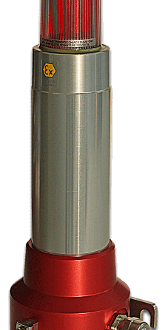
How is cement produced?
In its simplest structure, concrete is a combination of glue and totals or tremors. The glue made of Portland concrete and water covers the outer layer of fine (small) and coarse (larger) units. In response to hydration, the glue hardens and gains cohesiveness, creating a stone a mass known as concrete.
In this cycle, there is a way to the important quality of cement: it is plastic and flexible when mixed fresh, solid and at best solid. These properties make sense of what material, concrete, high-rise buildings, extensions, sidewalks and interstate highways, houses and dams can do.

Ratio
A way to achieve strength properties for reasonable care in a ratio of care and mixed fastening. The mixture, which requires additional adhesive to compensate for any imperfections between the overall values, can be difficult to lay and supply on hard surfaces and light cement. The combination with excess concrete bexleyheath adhesive is not difficult to use and will provide a smooth surface; in any case, the following cement is not ingenious and can be broken more efficiently.
The nature of the glue determines the personality of the essential. The strength of the adhesive, therefore, depends on the proportion of water to be cured. The water-concrete ratio is the weight of the mixed water separated by the weight of the concrete. Excellent cement is delivered by bringing down the water-concrete proportion however much as could reasonably be expected without forfeiting the usefulness of new concrete, permitting it to be appropriately positioned, solidified, and restored.
An appropriately planned combination has the ideal use for the new concrete and the necessary toughness and strength for the solidified cement. Normally, a blend is around 10 to 15 per cent concrete, 60 to 75 per cent total and 15 to 20 per cent water. Entrained air in many substantial blends may likewise take up one more 5 to 8 per cent.
Different Ingredients
Practically any regular water that is drinkable and has no articulated taste or scent might be utilized as blending water for concrete. Improper impurities in the water mixture can not only affect the application time and sufficient strength but can also cause bleeding, discolouration, substrate breakage, volume instability and reduced strength. . The determination of high mixing usually sets certain limits for chlorides, sulphates, salts and solids in the water mixture if tests cannot be performed to determine the effect of contamination on the final concrete.
Medium-fine structural areas require a small rough sum, but large dams use a total of up to six creeps in width. The constant level of molecular size is attractive for the effective use of the adhesive. In addition, the totals should be net and free of anything that would significantly affect the behaviour.
Hydration begins
Shortly after the sun, the water and concrete were combined, and the combination began to solidify. All Portland concrete is pressure-driven concrete, which is applied and reinforced with a mixture that reacts to waterlogging by hydration. During this reaction, the charge structure is the outer layer of each concrete molecule. The charge expands and expands until it connects to the charges of other concrete particles or adjacent units.
For sections, the concrete is left until the wet film disappears on the surface, and then a wooden or metal palm is used to smooth the volume. Drift is a slightly uniform, albeit relatively poor, surface with a large slip barrier and is often used as a final finish to outer pieces. If a smooth, hard, thick surface is required, drift followed by steel scooping.




